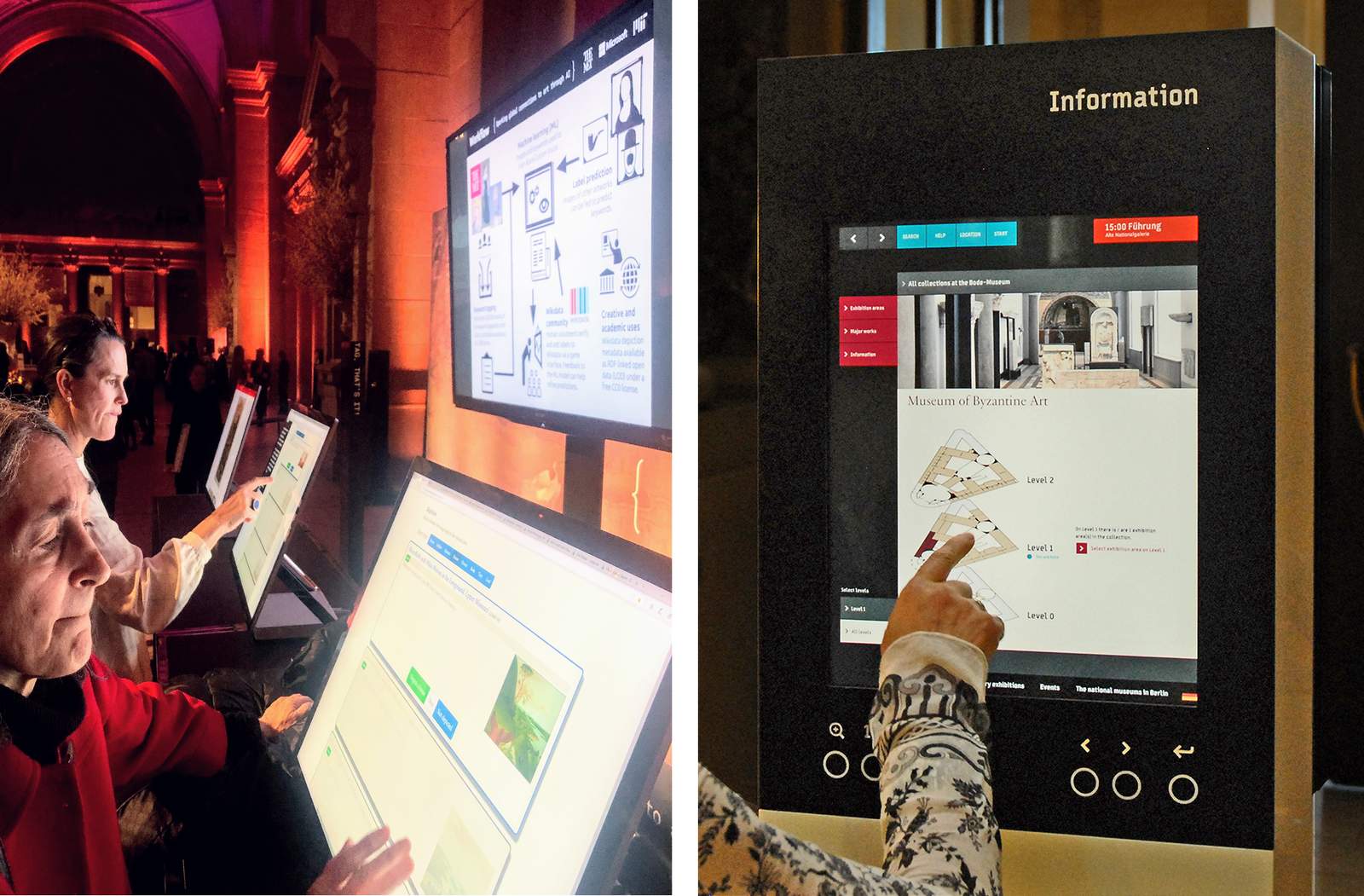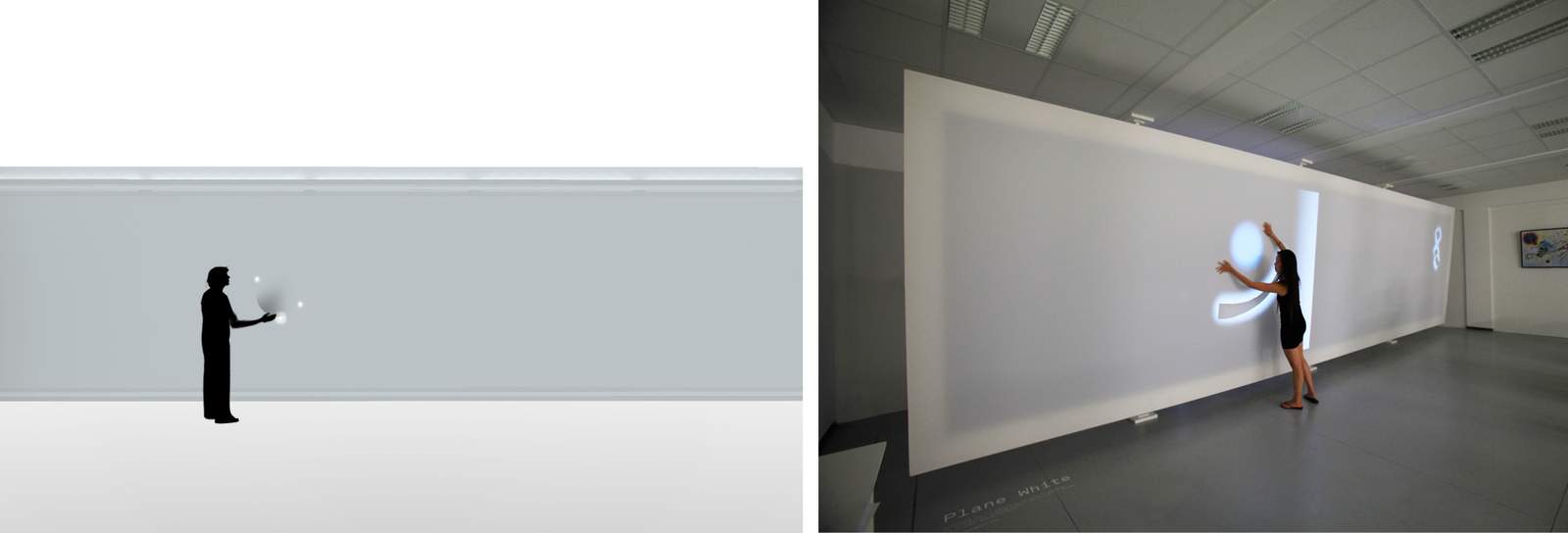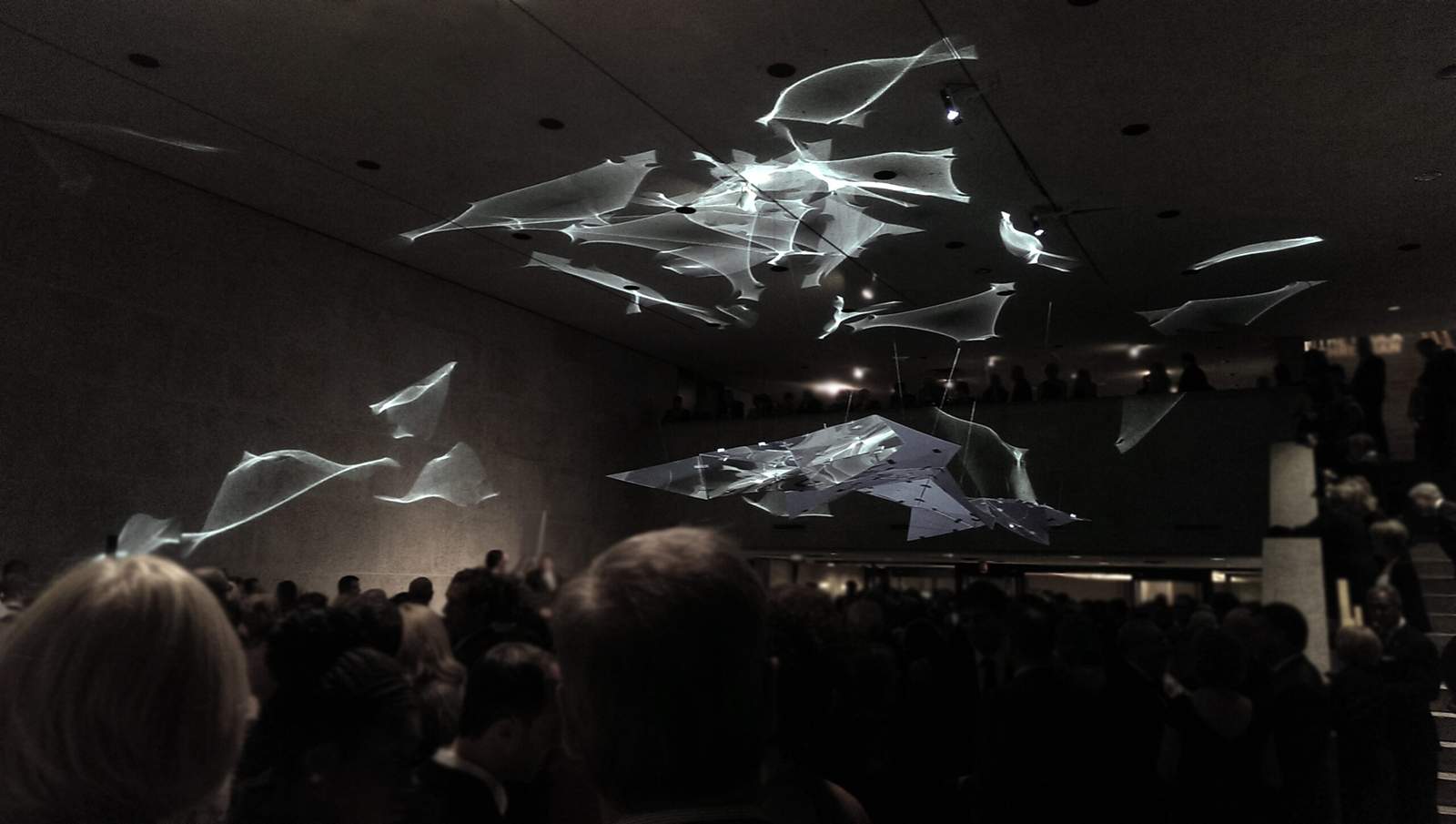Judging for the 11th A+Awards is now underway! While awaiting the Winners, prepare for the upcoming Architizer Vision Awards, honoring the best architectural photography, film, visualizations, drawings, models and the talented creators behind them. Learn more and register >
Museums adopt computer technology as a new medium and an opportunity to create immersive experiences. In these situations, electronic systems enable viewers to control and manipulate different media types, such as light, sound, video, and computer graphics, generating dynamic interactive content. This level of viewer participation offers new ways to look at art and interact with it, ways that go beyond the traditional passive observation of art—and the traditional architectural design of the museum typology.
Interactivity deepens the audience’s connection with museum exhibitions. From the way the public navigates through the different museum galleries to the immersive experience that some technology-driven artworks offer, viewers fully engage with the museum environment and the artwork on display. Artistic mediums like painting, drawing, photography and sculpture expand to include new art forms such as virtual reality, digital installations, and projection mapping. The screen appears as a new artwork support.

A person using interactive digital signage. Photo by Fuzheado via Wikimedia Commons (left); Screen displaying the different floors of the museum and the contents of the exhibition spaces. Photo by Jean-Pierre Dalbéra via Flickr (right).
Social Media, Virtual Tours and Navigation
Contrary to the “no-touching” policy of museums to protect the artwork on display, some exhibits encourage full contact, sometimes not just touching but also sitting on, walking over, or through art installations. The goal is to make the experience as engaging and personal as possible.
But interactivity in museums starts even before one sets foot in them. Museums are aware of the importance of technology to optimize the museum experience, making it more attuned to the current information and technology era. Social media presence is undoubtedly paramount to informing about the exhibits and the schedule of events and activities, for instance.
Virtual tours work 24/7, 365 days. From an art institution’s perspective, virtual tours are a very enticing way to draw potential visitors. From a viewer’s standpoint, they allow those who cannot travel or have a disability to see the exhibits in the comfort of their homes. Needless to say, virtual tours are a marketing tool to promote new exhibitions or events. They are more effective than images because they offer a better sense of the size and scale of the artwork, and they might also be the only way viewers can get a glance at the artwork that is in storage.
Once inside a museum, wayfinding digital kiosks ease the navigation through the building—especially a large one with multiple floors and wings of endless interconnected rooms. Wayfinding digital signage displays vibrant visual graphics providing building layouts and exhibition information. A clear and intuitive presentation minimizes confusion and maximizes the experience through 2D and 3D displays that can be enlarged and rotated, offering a near-real navigation experience. This level of interaction provides the visitor with a sense of space and place while offering a taste of what is yet to come.

Plane White by Carina Ow, Switzerland
Interactivity: Connecting Artist, Artwork and Audience
Not only do touchscreen displays are informative, but they also enliven exhibits by combining images, videos, sound, and narration. Using this technology, museums promote innovative methods of curation and new forms of display and interaction with the public.
Museums rely on technology professionals to create unique exhibitions that offer visitors new ways to engage with art. Breeze Creative and Interactive Scape are examples of interactive experience design companies that have become essential allies for museums to develop unique exhibitions.
The implementation of interactives is gaining strength in parallel with the growing presence of digital art in museums. The Serpentine Galleries in London (UK), the National Museum of Singapore, the San Francisco Exploratorium, and the Interactive Art Experience in New York City are only a few of the growing list of art institutions that shape the digital art scene. Multimedia installations engage the audience through light, sound, image, and video projections.
Other exhibits, like Behaviours of Light by Canadian architecture firm JNZNBRK, feature elements that can be walked around, over or under to enhance the spatial experience. Plane White by Carina Ow is an example of installations where the viewer is enabled to create an art piece through sensors that detect motion and touch, establishing a personal relationship involving the artwork, the audience, and the space. This level of interaction responds to some artists’ desires to produce art that is participatory, and to a certain extent, the artwork requires an intervention from the audience to be complete.

Behaviours of Light by JNZNBRK, Winnipeg, Canada | Popular Choice, 2nd Annual A+Awards, Architecture +Art
Bringing The Exhibit to Life: An Educational Tool
With interactive technology, museums broaden their horizons in curation methods, creation of new display forms and interaction with the public. Interactivity appeals to audiences of all ages who are encouraged by curiosity and the prospect of an immersive experience.
Interactive technology offers new ways to look at art and educate. With regard to education, by collaborating with designers who specialize in interactive exhibition design, museums have the opportunity to develop their role as information centers where students and researchers can study and work. In turn, museums can collect valuable information from the users’ experience, information that can be used to prepare future exhibits and statistics analysis, for instance.
Keeping up with technology appears to be the challenge that museums will have to face in the coming years. The goal is to develop new services aimed at enriching a connection with the public.
Top image: Robertson G. Adams, Digital, interactive ‘River of Grass’ exhibit at Frost Museum of Science in Miami, CC BY-SA 4.0
Judging for the 11th A+Awards is now underway! While awaiting the Winners, prepare for the upcoming Architizer Vision Awards, honoring the best architectural photography, film, visualizations, drawings, models and the talented creators behind them. Learn more and register >


